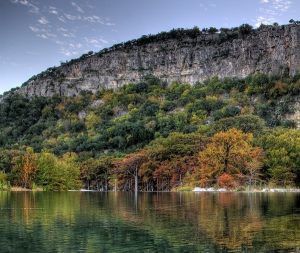Why and How Leaves Change Color in Fall
This is Passport to Texas
Why is the sky blue? Why do birds sing? Why do leaves turn color in fall? We’ve got you covered on fall foliage. It begins with longer nights…
…which is a signal that winter is coming. And, a consequence of that is the leaf is no longer making chlorophyll and other pigments start to show up. Some are already there, some are produced after the leaf stops making chlorophyll.
Damon Waitt is director of the North Carolina Botanical Garden, formerly of the Ladybird Johnson Wildflower Center. Another part of the “coloring” process is when leaves seal themselves off from the trees.
And it’s during that time that the leaves are changing color. Because one of the coolest colors, of course, is red and purple. You know, the Big Tooth Maple colors. That’s actually a pigment called anthocyanin, and it’s produced when that leaf is cut off from the rest of the plant. And the sugars that are still left in that leaf will actually convert to this pigment and turn red.
A chemical process (triggered by longer nights) causes leaves to change color. However, other variables affect the depth of color.
So, there are a lot of things that can affect how deep the reds are: temperature, sunlight…all these things have an effect on the expression of these different colors. And, that’s why each fall is different.
Now, go forth and amaze your friends with your newfound knowledge.
For Texas Parks and Wildlife, I’m Cecilia Nasti.



 Passport to Texas is a
Passport to Texas is a  Passport to Texas is made available by:
Passport to Texas is made available by: